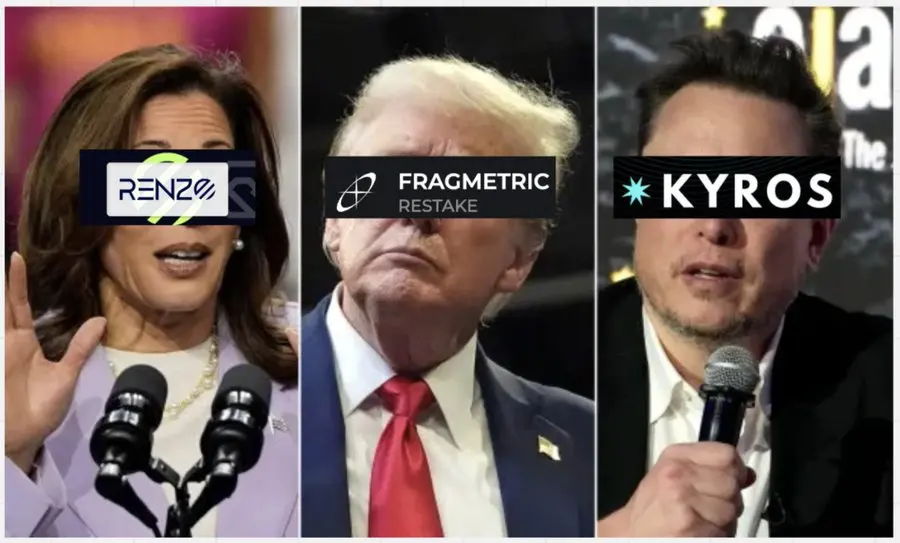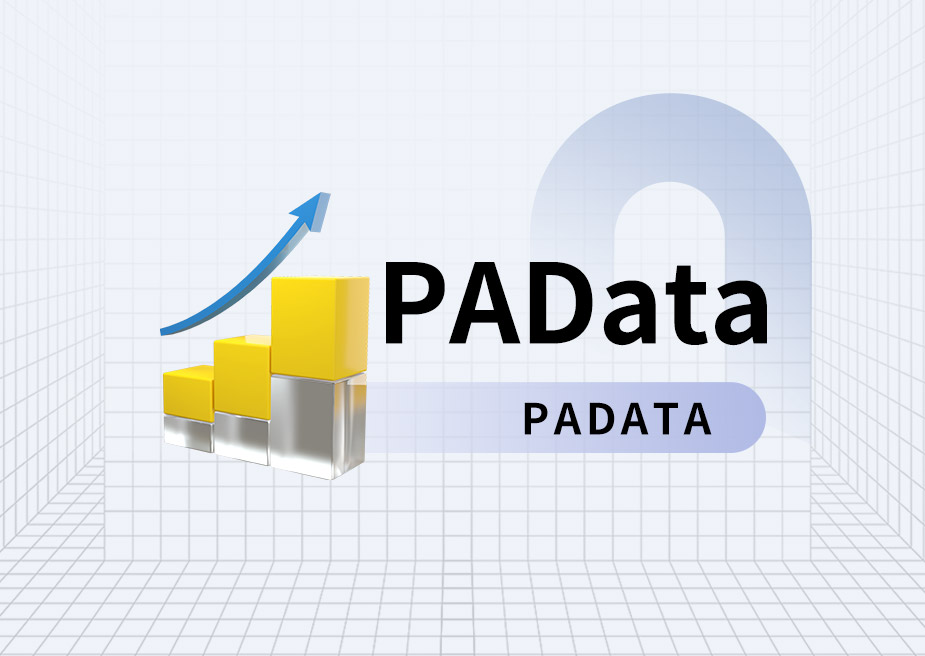Author: Flow, Crypto Researcher
Compiled by: zhouzhou, BlockBeats
Editor's note: This article introduces Jito Labs' re-staking protocol on Solana, Jito (Re)staking, which allows the use of staked SOL assets to obtain higher returns and potentially participate in airdrops. Users can re-stake SOL through three providers (Renzo, Fragmetric, and Kyros), each of which differs in risk, liquidity, and potential returns. The article compares their features in detail and recommends preferring Kyros, which supports fair launch and has potential airdrop returns.
The following is the original content (for easier reading and understanding, the original content has been reorganized):
After successfully building the largest liquid staking protocol on Solana, Jito Labs has brought another important development: the launch of a new re-staking protocol - Jito Re-staking. This re-staking project is live today and will soon open deposits, with an initial re-staking limit of approximately $25 million (147,000 SOL). For those who want to get higher SOL annualized returns and want to be the first to participate in airdrop opportunities, this is a very attractive opportunity in the current market.
Before we get into how to maximize this opportunity, let’s briefly review the basics of Jito re-staking.
What is Jito Re-Pledge
In simple terms, re-staking is the use of already staked assets to provide security for a specific decentralized service again. Although it may seem unimportant, it is actually one of the most promising innovations in this cycle. The concept was pioneered by EigenLayer and was first launched on the Ethereum mainnet in June 2023.
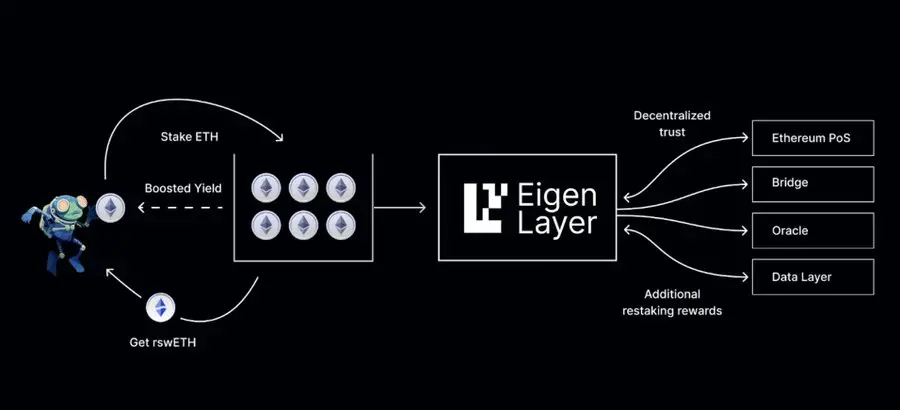
Example of how re-staking actually works
Today, Jito is finally bringing this new technology to Solana through its restaking program.
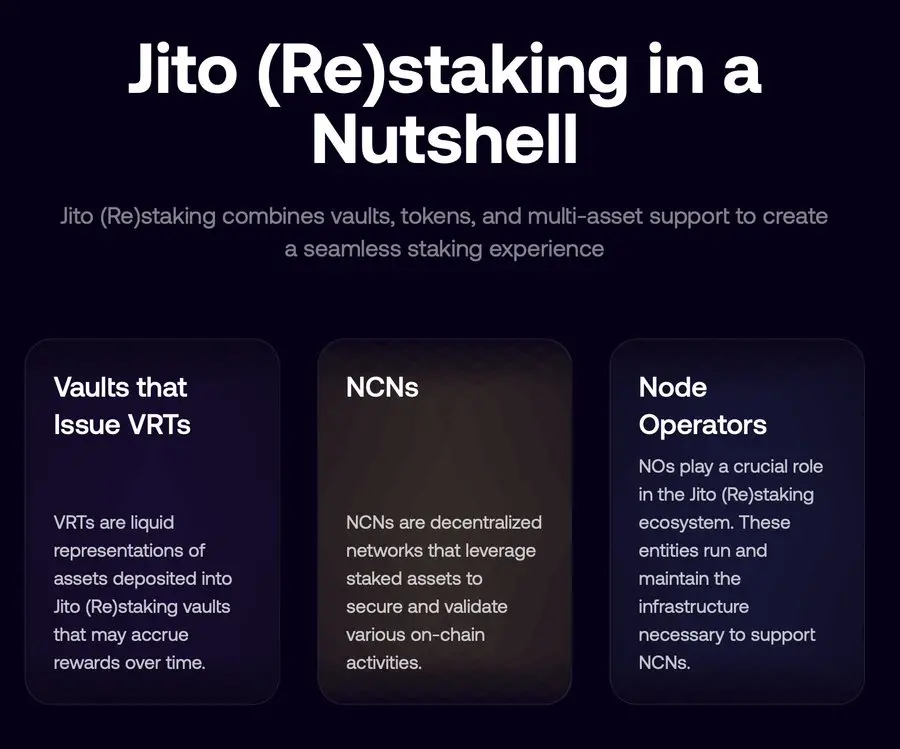
Schematic diagram of the components of Jito re-staking
Core components of Jito's re-staking framework
The Jito re-staking framework consists of two main components: the re-staking program and the vault program. They can be thought of as two independent entities that work together to provide a flexible and scalable infrastructure for creating and managing staked assets, vault receipt tokens (VRT), and node consensus operators (NCN). VRT is Jito's term for liquid re-staking tokens, while NCN is similar to the active verification service in EigenLayer, which is used to represent the entities that will utilize Jito's re-staking solution.
The main function of the re-staking program is to manage the creation of the Node Consensus Operator (NCN), the selection mechanism for users, and the reward distribution and penalty mechanism. This part is invisible to users and can be regarded as the core support of Jito's re-staking solution.
The Treasury is responsible for managing liquid re-staking tokens (VRT) and customizing different re-staking strategies through DAOs or automated protocols. This is the main interface for users to participate in re-staking. By analogy, the re-staking role of EigenLayer is played by the re-staking program on Solana, while the Treasury is similar to EtherFi, acting as a liquidity layer between users and the core re-staking protocol.
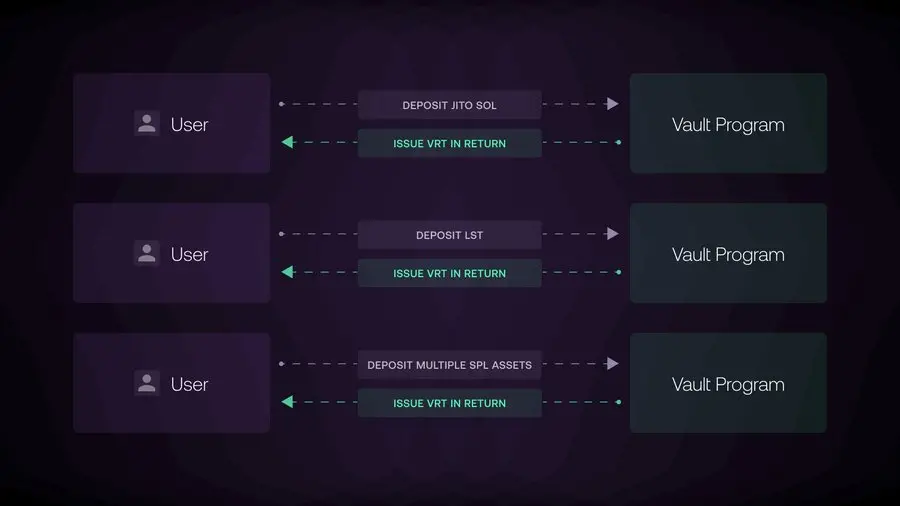
Graphical representation of how the Vault program works
3 VRT providers
In the initial stage, Jito only cooperates with three VRT providers: RenzoProtocol ($ezSOL), fragmetric ($fragSOL) and KyrosFi ($kySOL), which will jointly allocate the initial cap of 147,000 SOL. Therefore, any user who wants to re-stake SOL through Jito needs to choose among these three VRT providers.
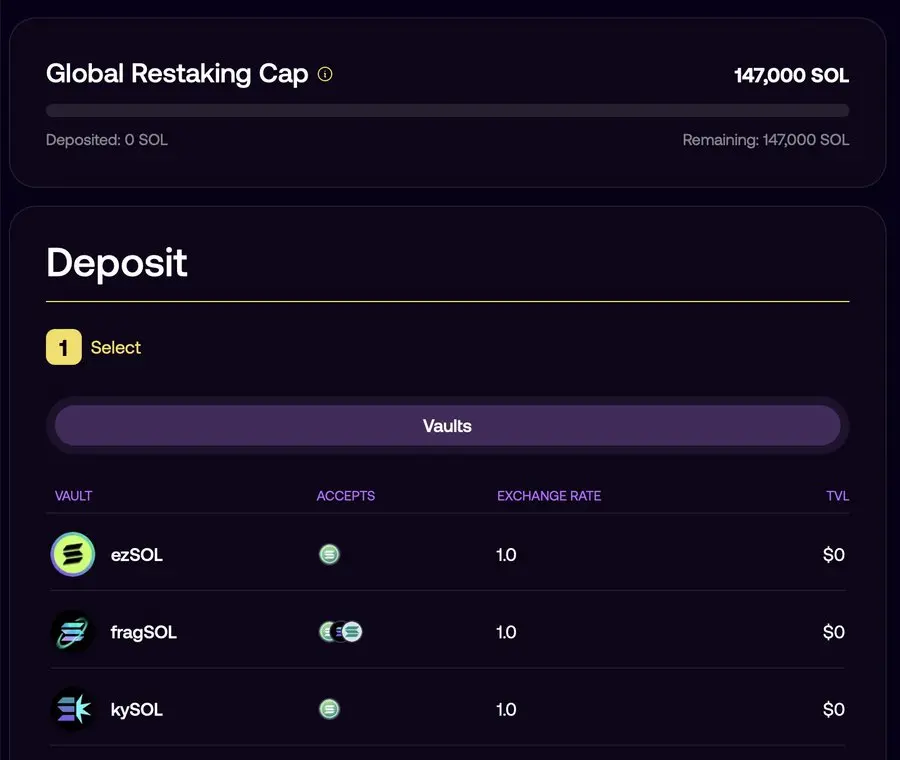
Image of Jito (Re)staking’s landing page.
Here is a quick list of the key features of each VRT provider:
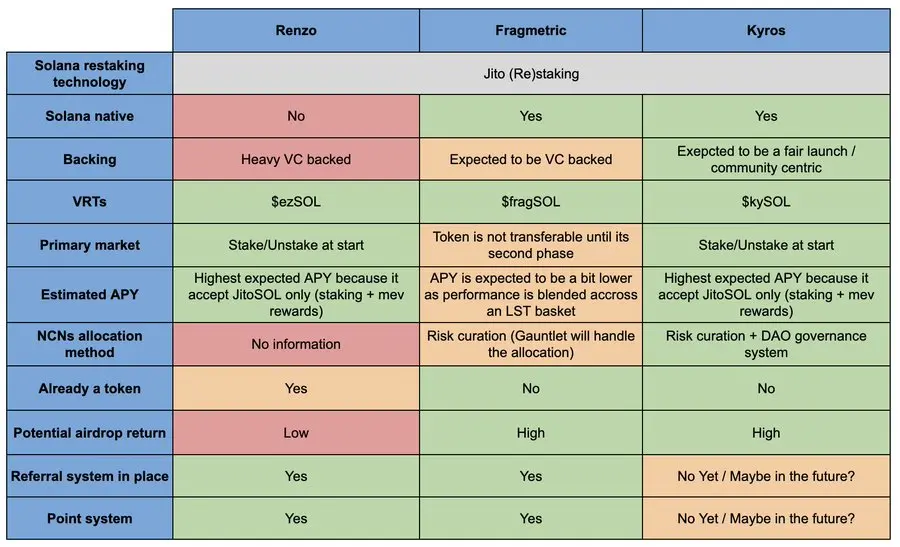
How to choose the right VRT for SOL re-staking?
When choosing which VRT to use, the key is to find an optimal risk-reward ratio.
Here is an analysis of each provider:
1. Risk: In terms of risk, the main focus is on protocol penalties (i.e., penalty risk) and liquidity risk. Since the current number of NCNs is small and it is in the early stages, it can be assumed that the risks of all providers are basically the same. Renzo and Kyros accept JitoSOL, which has the best liquidity, while Fragmetric accepts a wider variety of liquidity pledge tokens (LST), which may increase its liquidity risk. In addition, Renzo and Kyros' VRT will have liquidity from the beginning, while Fragmetric's tokens will not be transferable in the early stages. Therefore, in terms of risk, Renzo and Kyros have the lowest risk, and Fragmetric has a slightly higher risk.
2.APY Return: The APY of each project is expected to be similar, but it can be assumed that Renzo and Kyros may have a slightly higher APY than Fragmetric because they only use JitoSOL, but the difference will not be large.
3. Airdrop potential: Given that all VRTs have similar risks and expected returns, the key factor in choosing a specific VRT is the potential for airdrop rewards. Renzo already has tokens, and although re-staking may earn some future airdrop points, the potential is relatively low. Kyros and Fragmetric currently have no tokens and have higher airdrop potential.
Further analysis of the differences between Kyros and Fragmetric:
Features of Fragmetric: It is expected to receive venture capital support and may follow a high FDV, low circulation model; it is biased towards technology and decentralized user groups; it cooperates with risk management company Gauntlet; the token is not transferable in the initial stage; it accepts multiple LSTs.
Features of Kyros: Supported by SwissBorg, which helps distribute $kySOL and may cooperate with major players in Solana; may raise funds through a fair community-driven token model; large-scale promotion has not yet begun; NCN distribution method may be based on DAO voting; supports JitoSOL.
Taken together, KyrosFi is more attractive in multiple ways. First, SwissBorg's support makes it easier to distribute $kySOL and opens the door to major partnerships with Solana. Second, Kyros may take a fair launch approach. Finally, Kyros is relatively low-key at the moment, which makes its airdrop reward potential more attractive.
Of course, this is a personal opinion and is for reference only. I hope this analysis can help you make a more informed decision when choosing to re-stake SOL.
